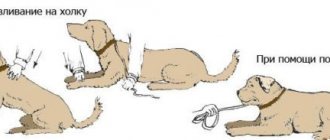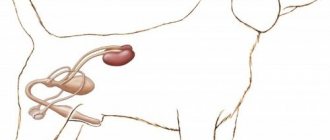Dog training is the most important stage in education, which is relevant for a small or large animal, a puppy or a more mature representative. Training not only helps to teach commands, but also strengthens relationships between participants in the process. In addition, this is a good way to teach the dog what to do and what not to do. And at some point, such science can save a shaggy friend’s life: for example, if a dog runs away, the owner’s command will certainly protect him from a collision with a vehicle.
The sooner you train your dog, the faster it will remember all the moments. That is, it is important to start training at an early age. But what if she came to her owner in adulthood? There is no need to panic, because all is not lost yet. Raising an adult dog is quite possible, it just requires a slightly different approach.
Preparatory stage
Don't rush to start teaching commands as soon as you get the dog. After all, it’s a huge stress for her to find herself in different conditions. And for various reasons, people develop adult dogs: perhaps the dog’s previous owner died or left for a long time, other reasons are also possible. The dog is bored and sad. Therefore adaptation is necessary. The new owner must wait as patiently as possible for the moment when the dog finally begins to trust him and contact is established. Only after you are ready to accept new things can you teach an adult dog commands. Training should be short and not too intense at first.
The preparatory stage consists of several positions for which you need to prepare in advance:
- Buy treats that your dog likes. Bring a treat with you to practice to reward the student for correct actions. Many dogs (Labradors, Beagles, etc.) become very obedient when they see food.
- Choosing a location. This should be a space where nothing will interfere with the training. Nothing should distract the pet from the educational process (other dogs, for example). If you are not sure of the reaction, it is better to keep your pet on a leash. This way, the owner does not have to raise his voice to attract his attention; it is enough to simply pull the dog slightly towards him. When training an adult dog at the initial stage has given positive results, you can choose other places for training, more crowded ones. This will develop concentration and teach the four-legged dog to obey its owner under any circumstances.
- Short lessons. For the first stages, it is enough to train the dog for 10-15 minutes twice a day. In between classes, you need to remind about commands, for example, try to say “sit” before eating or “place” when someone comes to visit. Not all breeds are prone to quick training. It is easier for some to maintain attention for a long time during the learning process, for others it is more difficult. It is easier to teach an adult dog the commands of the following breeds: German shepherds, hunting breeds, border collies, Labradors. They are considered focused in this regard.
- Training methods may vary for each breed. Educational processes depend on the characteristics of one type or another. Therefore, before starting training, it is recommended to familiarize yourself in detail with the intricacies of the breed and study the characteristics of its representatives. This will help you decide on the training method.
- Remember, training an adult dog requires more time and patience than small puppies during the socialization period. Therefore, do not demand quick results from your dog and do not be upset if progress is not immediately visible. Over time, regular training will definitely bear fruit. The main thing is to strictly adhere to the plan.
General rules for self-training
The main rules for raising a dog without the help of an instructor are:
- Good motivation - the reward should be very desirable.
- Timely Reinforcement – Dogs associate reinforcement only with the last action.
- Always ensure that orders are carried out - if the pet understands that it is possible to disobey at least once, he will definitely repeat it.
- A huge reserve of patience - a nervous state does not allow you to think sensibly, commands are not given correctly, rewards are given at the wrong time.
The main thing is to understand that a dog is a living creature, it is not a robot always ready to work. They may also be sick or “not in the mood.” If it is obvious that the dog is not in the mood to work, then it is necessary to reconsider the motivation or postpone the lesson for another time.
Dog training at home
It is recommended to teach a small puppy exclusively through positivity. A tasty morsel or favorite toy as a reward is ideal. Thanks to this training, the dog begins to trust the owner more, becomes more self-confident, and follows commands with pleasure.
- The active duration of training with a pet should be about an hour a day, divided into 3 - 4 times .
- Puppies up to 6 months old a very active nervous system; even a 15-minute session is a big burden for them.
You shouldn't expect perfect endurance from young dogs, especially choleric dogs. Reinforcements must follow immediately after the order is completed. Only after the formation of a stable reflex should you begin to practice endurance.
Introduction to ammunition
Before you begin training, your four-legged companion needs to learn that equipment is an integral part of life. As a rule, there are no problems with the collar; it does not interfere with moving and playing.
In most cases, young dogs perceive a leash as a toy. The dog can bite the hated rope, kick, and break free. All unnecessary actions should be ignored and the pet should be distracted from the leash with a toy. Gradually, the baby will get used to having a leash in his life.
Things are much more complicated with a muzzle; this is the most hated piece of equipment. To facilitate the process, it is necessary to begin to accustom the dog to a muzzle from early childhood. To put a muzzle on a dog, you need to take a piece of treat and put it inside. The puppy will become interested in the smell and stick its muzzle inside.
This action should definitely be praised. This exercise must be done at home every day, gradually increasing the amount of time the muzzle is in the muzzle.
The equipment must be correctly selected and fully suit the size of the dog. No one wears shoes that rub; the motivation to take them off quickly prevails over all other desires.
Accustoming to a place or enclosure
The “place” command is a mandatory skill for every dog. A dog's place is a warm, cozy corner in which a pet can relax. You cannot send a dog to a place as a punishment or show cruelty when it is resting there - there will be bad associations, the puppy will be afraid of its bedding.
To train a dog to enter the enclosure on the first command, you need to lure it there with a treat. Feed, saying “good place”, “well done place” and release. Then, without entering the enclosure, you can throw a toy inside and command “place.” When the dog runs into the enclosure, be sure to praise it.
Commands for initial familiarization
All orders are secondary; the first thing a puppy must learn is its name . If the dog does not hear the owner, it will not follow commands.
After the nickname, they teach basic control commands:
- "To me";
- "Near";
- “Sit, lie, stand (in a complex)”;
- “Ugh (impossible).”
This is the most minimal basis for dog management in society.
Training methods
You can teach your dog commands using a proven reward method. The methodology is based on absolute submission, but here it is extremely important, when becoming a leader for a four-legged animal, not to limit its actions too much and to encourage it. Reward the shaggy one for good behavior, and he will repeat it in the future. Bad behavior must be ignored; over time, the dog will not repeat it, knowing that it is not rewarded.
Have you already tried it and it doesn’t help?
Enroll in an online school and solve your problem right now!
more details
An excellent training method is the clicker, which in modern training is considered the most effective way to teach a dog commands. Your task is to teach the dog to perform specific actions after the click. Your pet associates the sound of a clicker with a treat or reward. Step by step it looks like this: command, click to indicate the moment of the desired behavior, completion of the task, treat.
Training an adult dog is a process that requires a subtle approach. When training your pet, it is not recommended to use choke collars; they cause pain, which will cause hostility towards you. And such nooses are not entirely safe. They can damage the dog's neck or even cause fatal suffocation.
Various chains, spikes, electric collars - all this speaks of a person’s laziness and his bad attitude towards animals. Such devices limit the pet’s freedom of action; it begins to fear the owner; teaching an adult dog commands in this way will definitely not work.
So that the dog is not afraid of you, you do not need to shout at him, much less beat him. Pets live in the present moment; they cannot connect punishment with what happened some time ago. Therefore, screaming will only provoke fear and will not have any effect on correcting behavior. How to teach commands to an adult dog without raising your tone? For example, if she climbed into something she shouldn’t, look at her with a stern look and use a certain sound that will help you understand what the dog is doing badly. You cannot punish an animal or shout. This will not only not teach him to follow commands, but will also destroy the relationship between him and the owner.
Training an adult dog should exclude any violent methods. Beatings can lead to fraught consequences. If you raise your hand on your pet, he will become afraid not only of you, but of everyone who is nearby. For example, if a child comes up to pet it, the animal will think that they want to hit it. The dog will get scared and may even bite. Therefore, you cannot teach an adult dog commands using aggressive methods.
Carrot or stick - which method to choose
A rhetorical question. Just 10-15 ago, all dog handlers spoke in unison about “dominance” and that a dog must respect its owner. Today, the situation has changed dramatically; an increasing number of animal psychologists are confident that you need to raise a dog through positivity .
Properly selected motivation makes the dog carry out commands with joy, which even looks more impressive. When a pet is raised without the use of a “whip”, he is absolutely confident in himself and has unlimited trust in his owner. By replacing the “carrot” with cruelty, there is a high chance of getting a frightened, nervous creature that, at any opportunity, tries to escape from its owner.
Training an adult dog: features
Teaching an adult dog commands is harder than teaching a young puppy. If the dog came to you from a shelter or from other owners as an adult, remember that this dog has already experienced a lot. Dogs are usually trained throughout their entire lives, and even older pets sometimes require regular training. But if you get an adult dog or your pet begins to behave undesirably, you cannot do without training.
Always consider your pet's health status. Take your dog to the veterinarian, where they will tell you what it can and cannot do due to some problems. In addition, the examination can reveal the reasons for behavior changes. For example, if a dog refuses to obey the “sit” command, perhaps his hip joints hurt, which, of course, makes it difficult for him to sit. In this case, it is reasonable to replace “sit” with “stand.” Another reason for not following commands is that the dog is deaf or hard of hearing. You can try to teach the dog gestures so that the pet can understand the owner.
Do you have a special situation?
Our specialists met with everyone. They share their experiences in detail in our online school!
more details
The main task of the owner is to find an approach to the animal. And if you observe some bad behavior, then you need to find the reason for this. For example, a dog is annoyed by other dogs and behaves aggressively towards them. Perhaps this is simply protecting their territory. Having identified the cause of aggression, it will be much easier for you to eliminate it. If your dog defends his toys that you took for a walk, remove them. The dog will have nothing to protect, and he will become calmer towards other four-legged animals.
What does the exam include?
during the general training course exam :
- movement of the dog next to the owner (assessed throughout the entire test period);
- display of teeth and the dog's attitude towards the muzzle;
- a set of commands “Sit”, “Lie down”, “Stand”;
- the dog’s approach to the owner and return to the place;
- aportation;
- stopping unwanted actions (command “Fu”, refusal to take food from a stranger);
- overcoming a set of obstacles (barrier, stairs, boom, fence or inclined wall);
- attitude towards the shot.
Skill testing can be carried out in any order, with the exception of commands running as a complex.
How to teach a dog commands: training tips
Dog training should begin no earlier than a few hours after feeding and two to three hours before the next meal. Thus, a reward in the form of a treat will be the best incentive. In addition, there are several other points that should be taken into account when training an adult dog:
- Constantly reinforcing learned commands is the key to success. During one training session, process 1-3 commands, and do not forget to repeat the material covered./li>
- The optimal lesson time is no more than 10-15 minutes. This way the dog won't get tired. Process commands no more than three to five times.
- Conduct training at different times of the day (so that the animal can navigate both day and night), in different locations. A change of environment and time will strengthen your skills well.
- If there is a catastrophic lack of time for training, how to teach a dog commands? Teach your pet commands everywhere and always. For example, give simple commands before eating, this will always keep the shaggy one in good shape.
And the most important thing to always remember is that adult dogs, like people, are less amenable to training than representatives of the younger generation. However, patience and consistency will help achieve good results.
Team "Come to me"
“Come to me” is one of the main commands that should be instilled in an animal from an early age. You can find out how to teach this command by reading a separate article on our website - How to teach a dog the “Come to me” command .
How is skill tested in the exam? The trainer gives the command “Come to me” with his voice, accompanied by a gesture. The dog should immediately run up to the owner and sit at his left leg (it is not necessary to walk around). The animal may be seated in front of the owner. In this case, the trainer additionally commands “Next”, and the dog sits on the left.
When calling your pet after the command “Walk” , before the command “Come”, you are allowed to call the dog in order to attract its attention. Then the approach time is counted from the moment the command “Come to me” is given, and the score does not decrease.
If the dog does not approach the trainer within 15 seconds, the skill is not counted.
Useful tips from professionals
- Before you begin training your dog outside, let him become familiar with the area. This way she will feel calmer and training will be easier.
- It is also useful to let your dog run before class. Tired, she will concentrate better on commands, which will greatly simplify the learning process.
- There is no need to repeat the command five times in three seconds, otherwise your pet will get confused.
- Make sure that all commands are carried out with pleasure and without fear. If you notice that your dog is scared, then most likely you were too strict. Stop training to let your pet calm down. The next day, start again, making everything a little softer.
- Gradually make things more difficult. The dog should obey you not only in a quiet place, but also in case of unforeseen situations.
- Make sure the dog obeys all family members.
Puppy training: where to start?
Before you demand anything from your dog, you need to remember a few simple rules:
- Study your pet's personality. Every dog is different and each needs an individual approach to enhance training.
- Clearly define the tasks that the dog must complete in the lesson.
- Develop certain gestures and signals that your dog should obey. Do not change them under any circumstances during the learning process.
- Reward each achievement of your pet with a small piece of treat.
- Try to make activities interesting for your dog. Play with her during breaks.
- Dogs get tired too. Don't delay your lessons.
In order for your dog to obey you and learn easily, you need to make friends with it . Your pet should trust you and not be afraid of anything. If you achieve this, you don't have to worry about training. It will be all plain sailing.
What accessories are needed to complete a general training course?
If you decide to conduct OCD on your puppy, then you will need the following accessories:
- Soft, appropriately sized collar;
- A leash about 2 meters long (a tape measure is not advisable, although acceptable);
- Muzzle for practicing skills (any type, except loop);
- A bag with treats (optional, but very convenient);
- Any item for fetch;
- A mat with which you can practice the “Place” command.
Even if you do not have this entire set, the instructor will advise you on what you can do without and what you will still have to purchase. In any case, a leash, muzzle and collar are required for any training.
After completing all 16 lessons of the general training course with your dog, you will learn to completely control him, and also understand much better what your dog wants.
How much does it cost to undergo OKD with a trainer?
Typically, courses are conducted with qualified dog handlers who require a fixed price for their services. The price range looks something like this:
- 7,000 rub. – average cost of group training;
- 16,000 rub. – a course of individual lessons with a trainer.
The prices are approximate, since the coach has the right to set an individual price depending on the region of residence and his own qualifications. So, for the money paid, the client will receive 16 classes in which the dog is present together with the owner. Training can take place in a group with other dogs or alone with a trainer for particularly obstinate dogs.
Prices for classes depend on the region of residence and the qualifications of the trainer.
Important! Sick dogs and bitches in heat are strictly not allowed to take the course. A dog in heat will distract other animals from training, and a fight may break out between the dogs.











